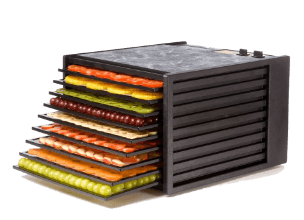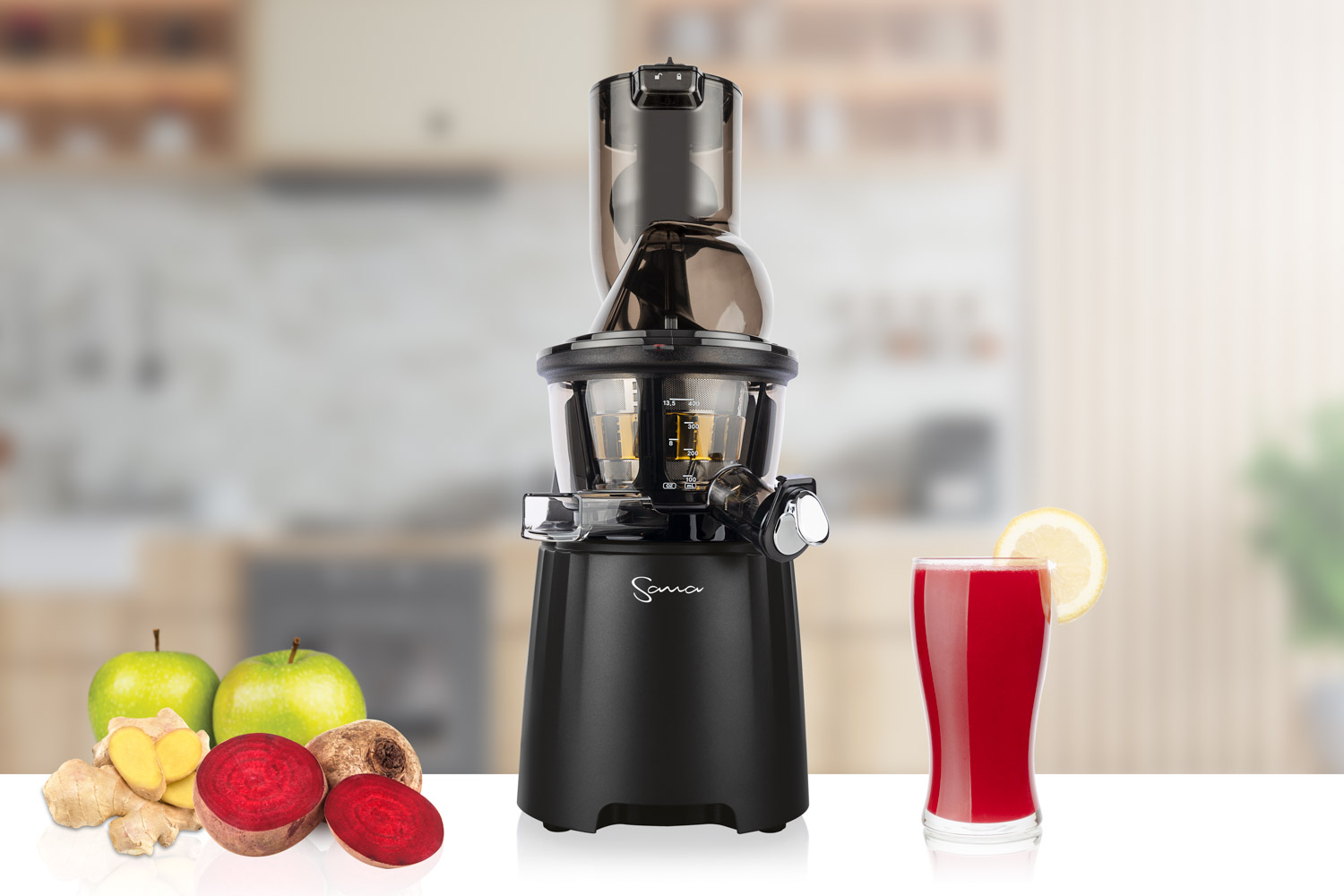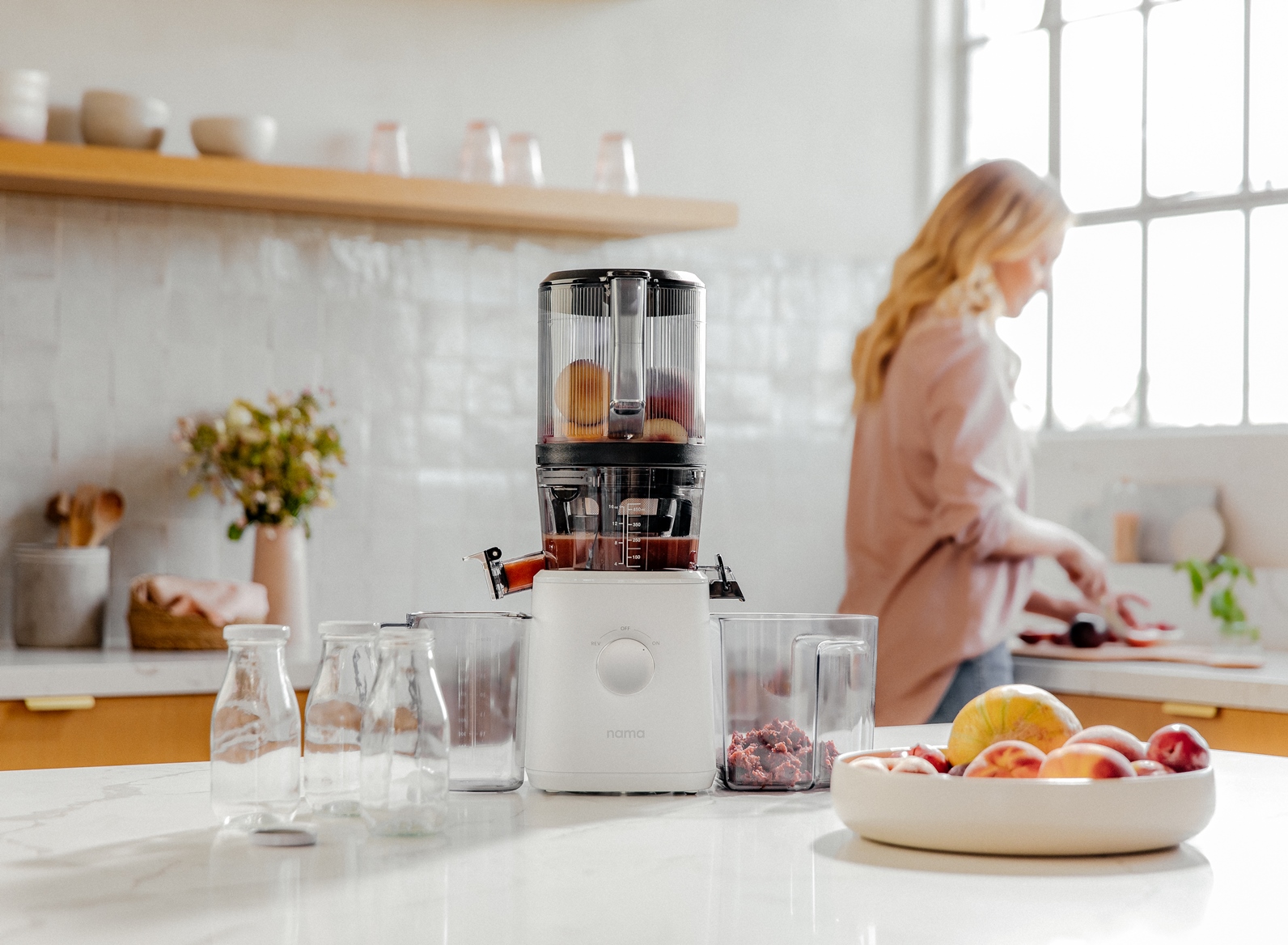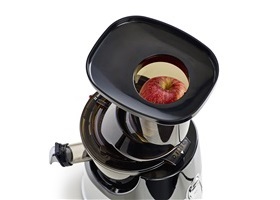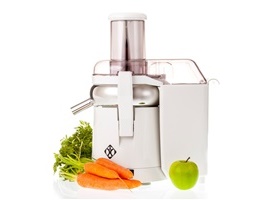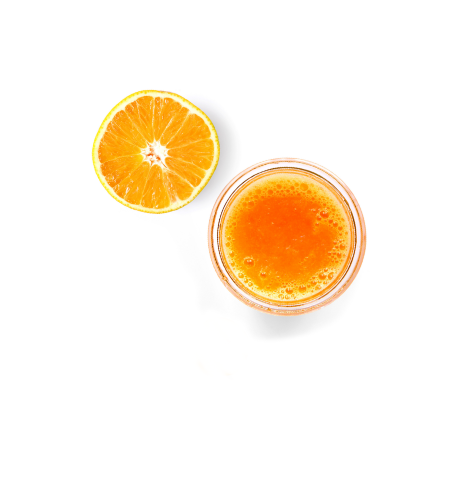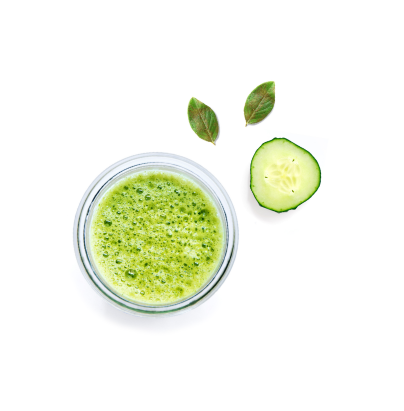21 Years Of Evolution In Juicer Design
How Fruit & Vegetable Juicers Have Changed
In our 21st Birthday Celebration piece, we said that the changes in juicer design that have come about during our business’ history deserved a separate article, so here it is: a nerd-out of epic proportions. Behold this opus, a veritable odyssey into the heart of juicing intricacies, crafted especially for those connoisseurs who yearn for the quintessence of juicer enlightenment!
Over the course of two decades and a year, the art and science of extracting the nectar from fruits and vegetables have borne witness to a series of metamorphoses. Let’s take a look at some of the changes that have shaped the juicing arena, and given rise to the success of UK Juicers since day one.
How it started:
Back in the day, when we set out on our mission of promoting juicers and juicing, the twin pillars of contemporary juicing technology – centrifugal and masticating juicers – were already well established. During the infancy of our business however, masticating juicers were still a niche product. All types of fruit and vegetable juicers have since seen a meteoric rise in their popularity, as health and wellness trends have gained momentum. Throughout this juicing revolution, the designs of masticating juicers in particular have gone through some remarkable changes.
The start of our journey towards success was guided by some notable pioneers of juicer design. Without their invaluable contributions, we might never have taken our first steps. Though these pivotal juicers are no longer with us, it’s only fitting to pay a heartfelt tribute to their legacy here.
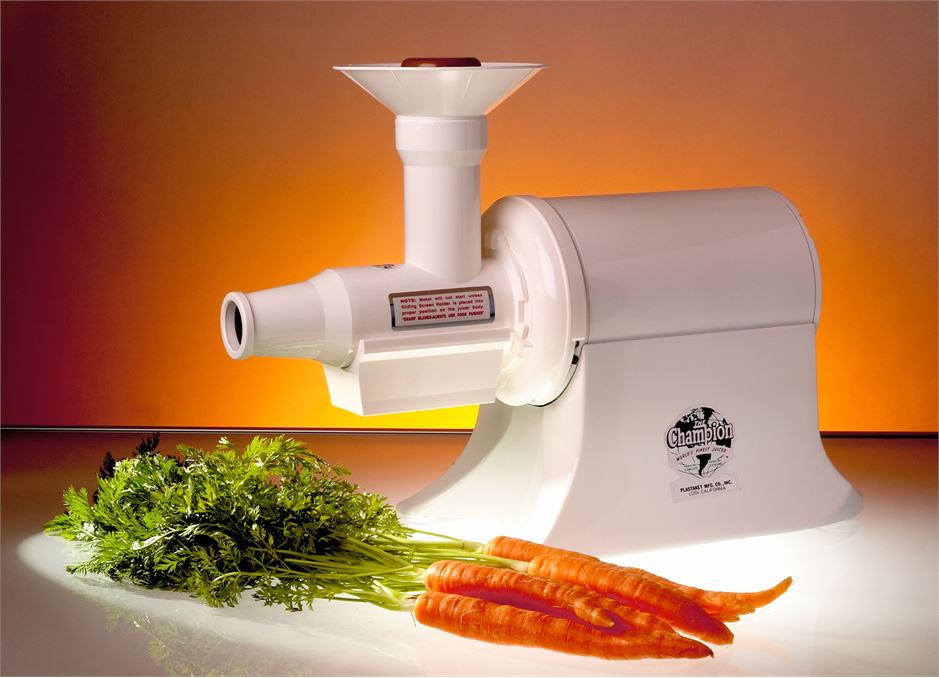 First is the Champion Juicer. This was the original masticating juicer that had been around since the 1950’s. Many Champion Juicers will still be out there, going strong for decades to come, because this American-made juicer was built like a tank. This unique machine featured a distinctive design, employing a rotating cylindrical cutter that effectively masticated and ground up ingredients within a stainless steel sleeve, which gracefully tapered into a cone shape. The tapered profile of the sleeve served a dual purpose, not only grinding the ingredients but also exerting back pressure that facilitated the extraction of juice through the screen located below the feed chute.
First is the Champion Juicer. This was the original masticating juicer that had been around since the 1950’s. Many Champion Juicers will still be out there, going strong for decades to come, because this American-made juicer was built like a tank. This unique machine featured a distinctive design, employing a rotating cylindrical cutter that effectively masticated and ground up ingredients within a stainless steel sleeve, which gracefully tapered into a cone shape. The tapered profile of the sleeve served a dual purpose, not only grinding the ingredients but also exerting back pressure that facilitated the extraction of juice through the screen located below the feed chute.
One thing that led to the demise of the Champion in its senior years was the exponential rise in the popularity of juicing leafy greens – kale anyone? Plastaket Manufacturing, the parent company, responded with a ‘greens attachment’ for the Champion but honestly, it wasn’t very good. The relatively high motor speed was the main limiting factor, and in the age of offshoring manufacturing to the far east, retooling at the US factory to come up with something completely new was off the table. Sadly, early in 2021 the last of these legends of the juicing world rolled off the production line, and we had to say goodbye.
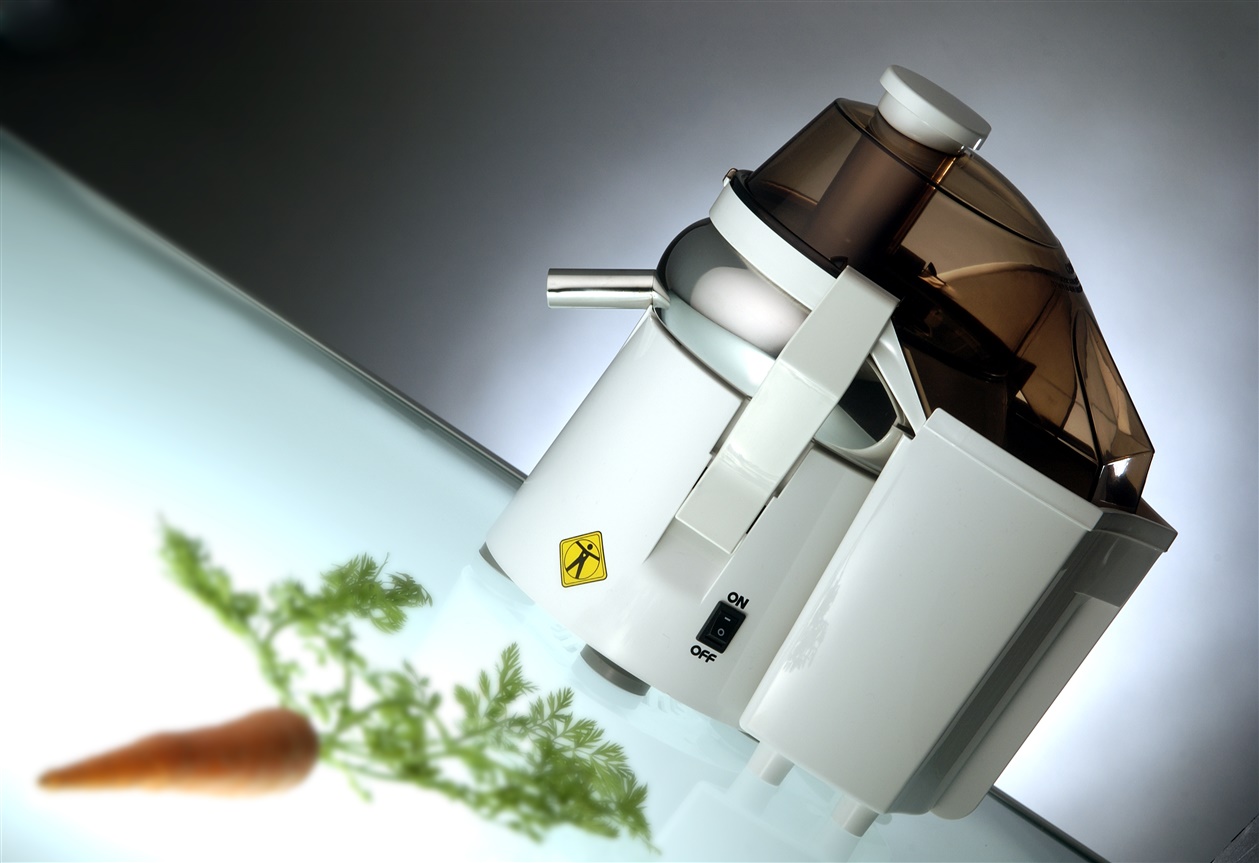 There is another iconic juicer to which we owe a substantial part of our initial triumph: the L’Equip Mini 110.5, a centrifugal juicer with an intriguing name and an abundance of both style and power. With its elegantly curved stainless steel juice bowl and sleek, compact design, it truly stood out amidst its peers and quickly soared to prominence. In 2008, it was succeeded by the L’Equip XL 215, featuring a feed chute large enough to accommodate whole apples, and it, too, became a resounding success as our journey progressed. Regrettably, due to some complexities involving L’Equip’s Korean associates, these exceptional centrifugal juicers have ceased production. Nevertheless, we hold onto the hope that someday, they may make a triumphant return.
There is another iconic juicer to which we owe a substantial part of our initial triumph: the L’Equip Mini 110.5, a centrifugal juicer with an intriguing name and an abundance of both style and power. With its elegantly curved stainless steel juice bowl and sleek, compact design, it truly stood out amidst its peers and quickly soared to prominence. In 2008, it was succeeded by the L’Equip XL 215, featuring a feed chute large enough to accommodate whole apples, and it, too, became a resounding success as our journey progressed. Regrettably, due to some complexities involving L’Equip’s Korean associates, these exceptional centrifugal juicers have ceased production. Nevertheless, we hold onto the hope that someday, they may make a triumphant return.
Honourable Mention
Before we delve into the more recent trailblazers of juicer innovation, let’s take a moment to acknowledge the unwavering reliability of Twin Gear Masticating Juicers. These stalwart machines have been a constant presence since our inception, characterised by their steadfast performance and enduring design. 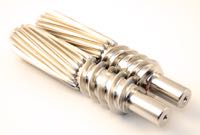 The methodical, low-speed operation of squeezing fruits and vegetables between two cylindrical gears results in exceptionally high-quality juice, teeming with essential nutrients. While these juicers are the ultimate choice for individuals seeking to maximise nutritional benefits, it’s worth noting that they demand more time and effort in both the juicing process and cleaning afterward. They continue to cater primarily to dedicated wheatgrass and greens aficionados, as well as those on a juicing journey to combat health challenges.
The methodical, low-speed operation of squeezing fruits and vegetables between two cylindrical gears results in exceptionally high-quality juice, teeming with essential nutrients. While these juicers are the ultimate choice for individuals seeking to maximise nutritional benefits, it’s worth noting that they demand more time and effort in both the juicing process and cleaning afterward. They continue to cater primarily to dedicated wheatgrass and greens aficionados, as well as those on a juicing journey to combat health challenges.
2002-2005: The Rise of Centrifugal Juicers
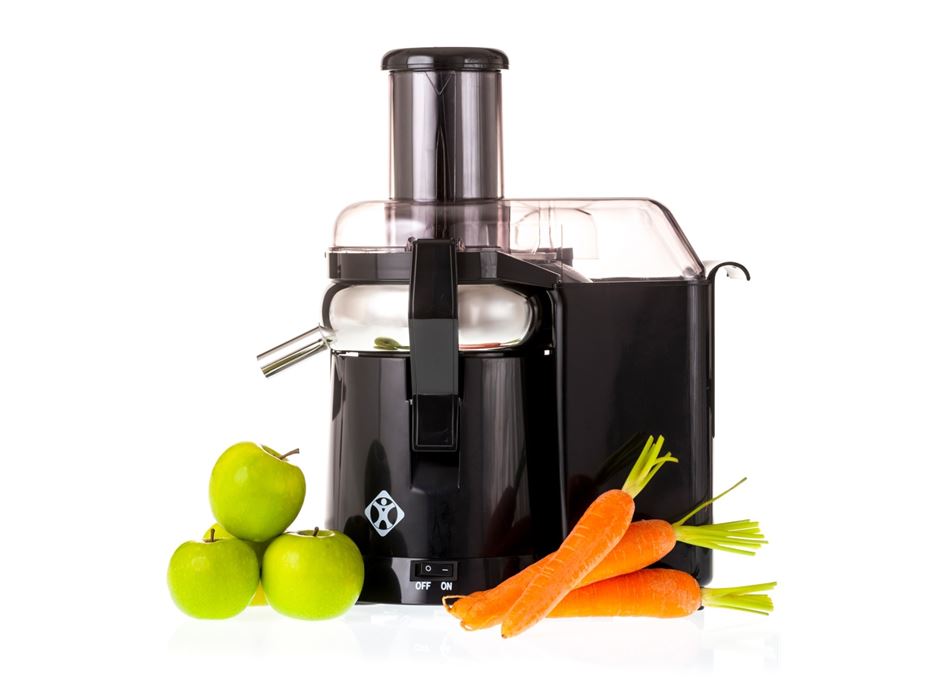 The early 2000s saw dominant performance for centrifugal juicers, which are rightly popular for their speed and convenience. These juicers utilise high-speed spinning blades to extract juice from fruits and vegetables. More and more centrifugal juicers appeared, many with large feed chutes that could take whole apples and handfuls of ingredients at a time, reducing the time spent on ingredient prep. During this period, Kuvings, and Hurom, today’s leading masticating juicer manufacturers, were still not very prominent in the juicing industry but they have since played a huge role in shaping the landscape. In the remainder of this article, we’ll continue our journey through time and explore the more significant changes in juicer design, focusing on the machines introduced by these two pioneering Korean factories, along with the innovative brands that have helped them to forge ahead.
The early 2000s saw dominant performance for centrifugal juicers, which are rightly popular for their speed and convenience. These juicers utilise high-speed spinning blades to extract juice from fruits and vegetables. More and more centrifugal juicers appeared, many with large feed chutes that could take whole apples and handfuls of ingredients at a time, reducing the time spent on ingredient prep. During this period, Kuvings, and Hurom, today’s leading masticating juicer manufacturers, were still not very prominent in the juicing industry but they have since played a huge role in shaping the landscape. In the remainder of this article, we’ll continue our journey through time and explore the more significant changes in juicer design, focusing on the machines introduced by these two pioneering Korean factories, along with the innovative brands that have helped them to forge ahead.
2006-2010: Low Speed Auger Juicers and Vertical Designs
Around 2008, a paradigm shift occurred in juicer technology with the development of vertical slow juicers, also known as vertical masticating or cold-press juicers. Kuvings (aka NUC) and Hurom were at the forefront of this transformation. Prior to this time, horizontal format single auger masticating juicers had already been around for a long time. However, when the auger was turned to a vertical orientation, bigger augers became possible and the masticating juicer world saw one of its greatest step changes.
Kuvings introduced their first vertical slow juicer, the Kuvings Silent Juicer. This juicer was a game-changer, as it operated at a slower speed, preserving more nutrients and minimising heat generation. 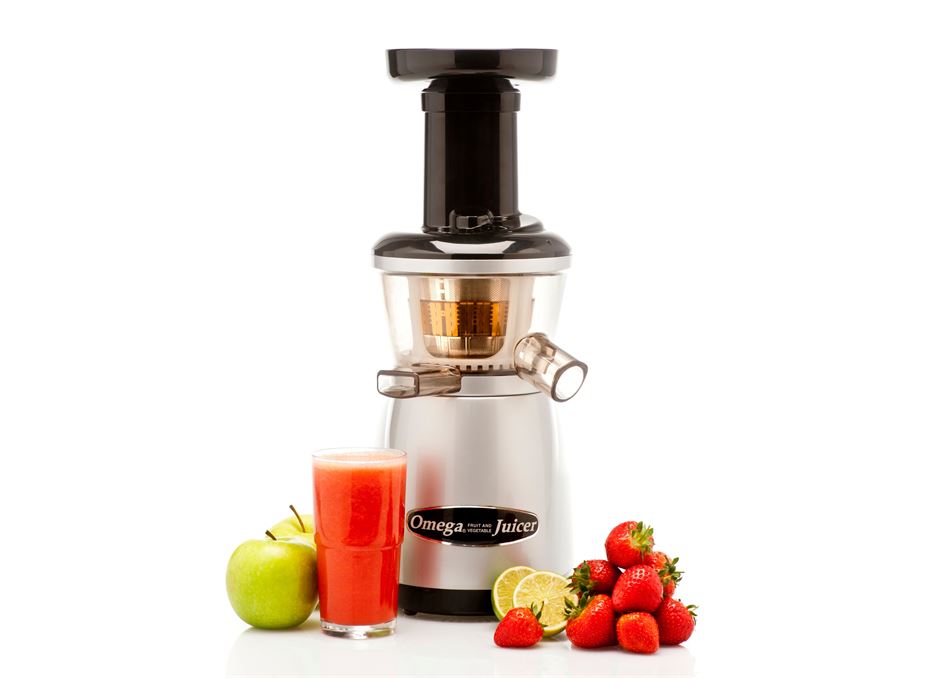 It was more space-efficient on kitchen countertops and the larger surface area of the auger also allowed a higher rate of juice production than the earlier horizontal auger juicers.
It was more space-efficient on kitchen countertops and the larger surface area of the auger also allowed a higher rate of juice production than the earlier horizontal auger juicers.
Around the same time, Hurom released their very similar vertical slow juicers and since then, much to the benefit of juicing enthusiasts, these two Korean manufacturers have been locked in a dynastic battle to stay ahead of each other, with improvements in technology and juice yields.
Other leading masticating juicer brands like Nama, Sana and Omega crafted their own juicers in collaboration with these factories, helping them to innovate. Our first juicers in this vertical format were the Omega VRT330 in 2010 (from the Hurom factory) followed by additional Omega branded models, and in 2013 the stainless Hurom HF. We haven’t looked back since.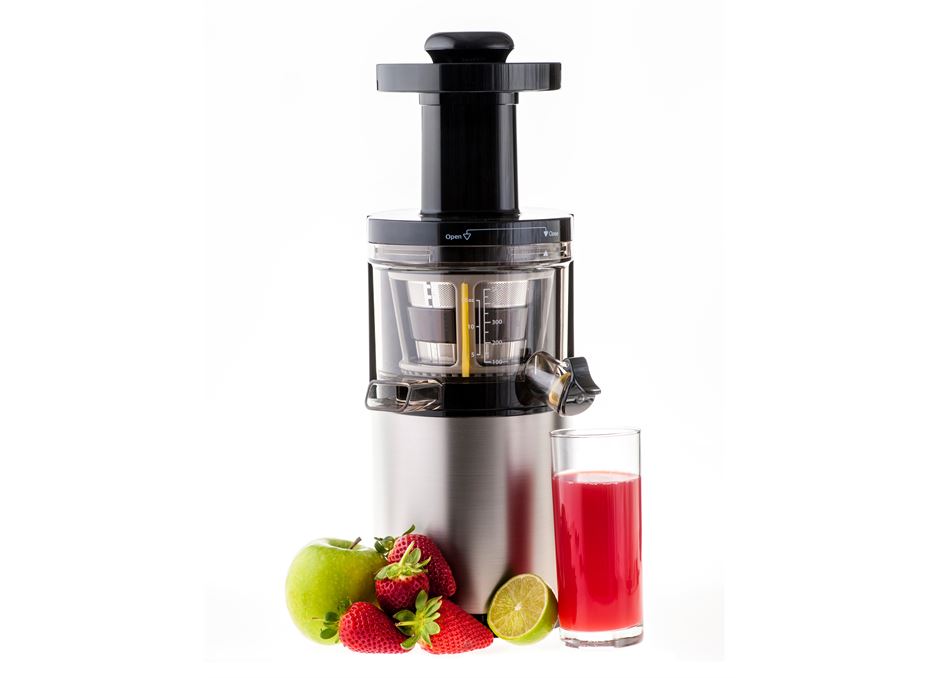
With the advent of these modern vertical masticating juicers, the traditional horizontal auger counterparts witnessed a notable decline in popularity. While they still enjoy a dedicated following, particularly among wheatgrass and leafy green juice enthusiasts, it’s fair to say that the newer vertical models have taken centre stage.
Nonetheless, there remain noteworthy exceptions to this trend, particularly exemplified by Sana, a brand that has consistently pursued innovation.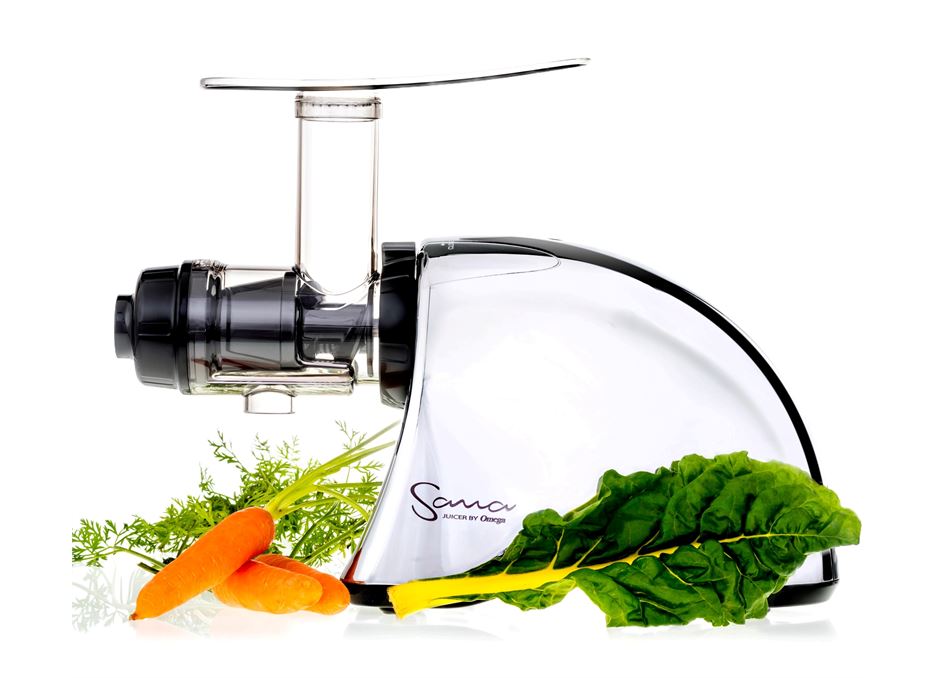 Horizontal models, aside from their enduring performance, often present the practical advantage of a more affordable initial investment.
Horizontal models, aside from their enduring performance, often present the practical advantage of a more affordable initial investment.
Unfortunately, The Champion Juicer was not the sole casualty resulting from these innovations. During roughly the same period, we also witnessed the decline of two other longstanding brands of horizontal juicers, Samson and Matstone. Their inability to adapt and innovate ultimately led to their demise in the evolving juicing landscape.
2011-2015: Advancements in Auger and Strainer Design
The early 2010s marked a period of refinement and innovation for both the Kuvings and Hurom factories, alongside the brands that collaborated with them. Kuvings though were about to take the lead with the addition of extra large feed chutes to cut down on ingredient prep.
Kuvings first Whole Slow Juicer, the B6000, 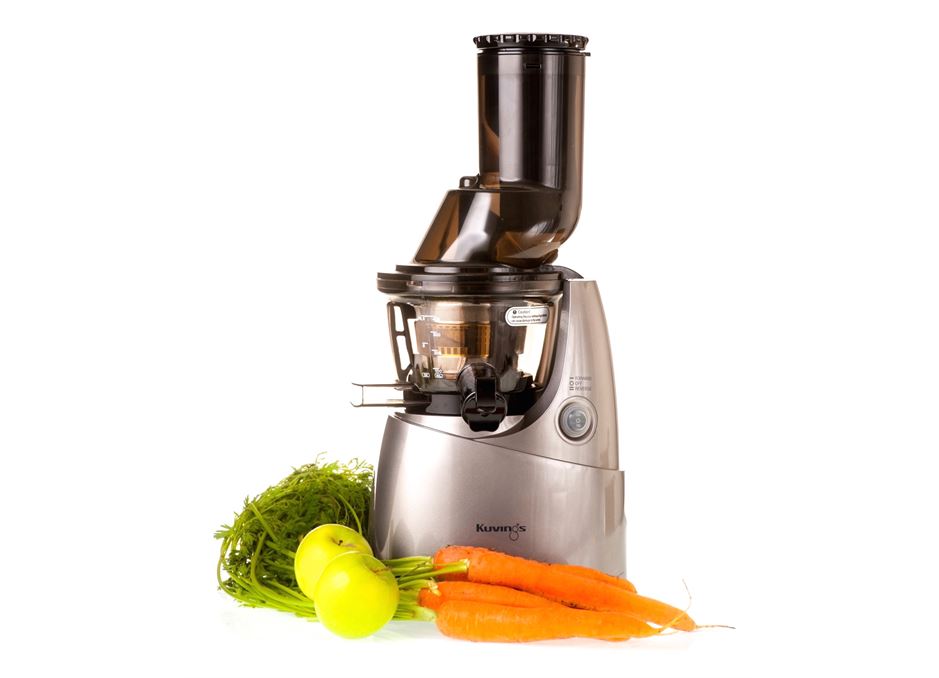 reached our shores in 2014. Featuring the first ever whole apple sized feeding chute on a masticating juicer, allowing fruits and vegetables to be juiced without the need for chopping. This innovation made juicing even more convenient and time-saving and vastly increased the popularity of the Kuvings range. The ability to get the juicing done quicker while still producing nutrient rich juice propelled the popularity of masticating juicers to new heights.
reached our shores in 2014. Featuring the first ever whole apple sized feeding chute on a masticating juicer, allowing fruits and vegetables to be juiced without the need for chopping. This innovation made juicing even more convenient and time-saving and vastly increased the popularity of the Kuvings range. The ability to get the juicing done quicker while still producing nutrient rich juice propelled the popularity of masticating juicers to new heights.
On the path of progress, Omega and Sana Juicers embarked on strategic collaborations with both rival factories, giving rise to a diverse range of wide and narrow feed juicers under their respective banners. Concurrently, Hurom took a significant step forward by unveiling its second-generation slow juicer, 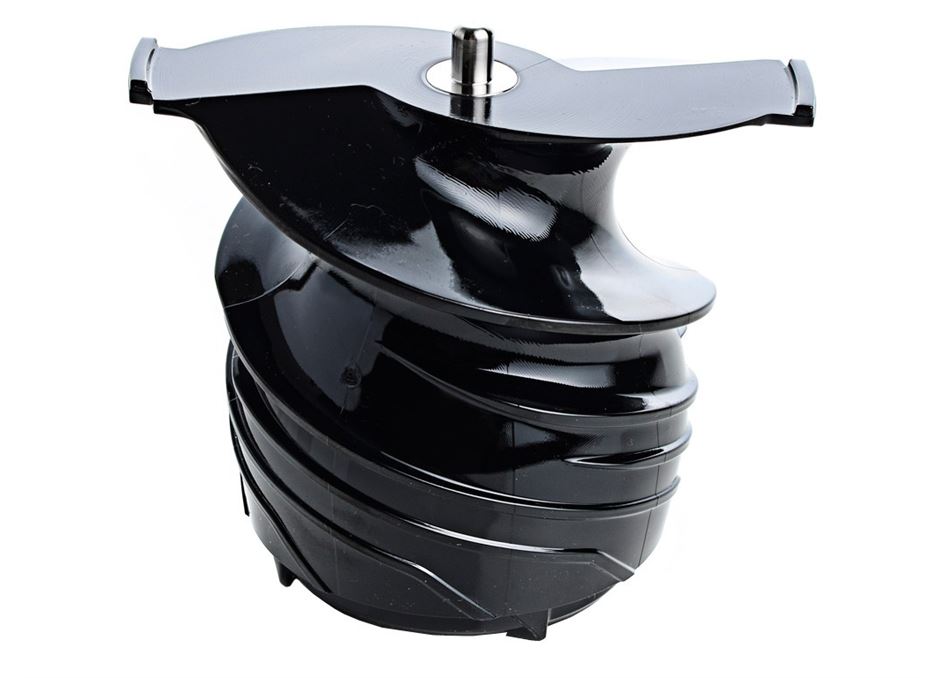 featuring the innovative Twin Wing Auger for enhanced ingredient feeding, albeit within the constraints of smaller feed chutes. This pivotal design enhancement translated into higher juice yields and an overall improvement in juicing performance.
featuring the innovative Twin Wing Auger for enhanced ingredient feeding, albeit within the constraints of smaller feed chutes. This pivotal design enhancement translated into higher juice yields and an overall improvement in juicing performance.
Over time, both factories have remained committed to refining their screens and augers, continually striving to increase extraction pressure and achieve a finer juice output. In pursuit of enhancing the self-feeding capability of their juicers, both factories introduced auger designs with a more blade-like top section. Nevertheless, Hurom found itself in need of a solution to counter Kuvings’ patented large feed chute technology, as exemplified in the excellent Sana 868 juicer.
2019: Smart Juicers?
In recent years, both Kuvings and Hurom have remained at the forefront of juicer technology innovation. Kuvings, for instance, introduced a ‘smart juicer’ equipped with BMI touch sensors, capable of providing users with body fat information. Additionally, it allows for the monitoring of juicing activities through a dedicated app. Their endeavour to incorporate the ‘internet of things’ into juicing, while ambitious, has yet to fully take flight and has been a somewhat elusive project for Kuvings. Time will tell if this pioneering effort eventually gains traction and becomes more widely adopted.
Both factories continued to focus on the main perceived areas of improvement that would give them the edge: making juicers more efficient, making juicing a quicker and more enjoyable experience, and making juicers easier to clean.
2020: Another Step Change
Kuvings patented large feed chute designs had been copied many times in the wild wild east of China. However, these Chinese imitations often fell short in terms of quality and performance. Bound by their commitment to higher standards and more ethical practices, the Hurom factory recognised the need to respond to the user-friendly wide mouth feed innovation that Kuvings had introduced.
As the competition intensified, a breakthrough emerged, catalysed by the collaboration with the American brand Nama. This partnership led to the inception of the concept known as ‘Batch Juicing’ or ‘Hands-Free Juicing’ back at the Hurom factory, a groundbreaking approach aimed at revolutionising the juicing experience.
2021: The Nama J2 – Pioneering Hands Free Juicing
American Brand Nama developed the concept of batch juicing to its current pinnacle in collaboration with Hurom. The traditional feed chute had morphed into the form of a new feed ‘hopper’, where ingredients could be loaded up in bulk and the juicer would then process the bulk recipe all by itself, ushering in a truly ‘hands-free’ juicing experience.
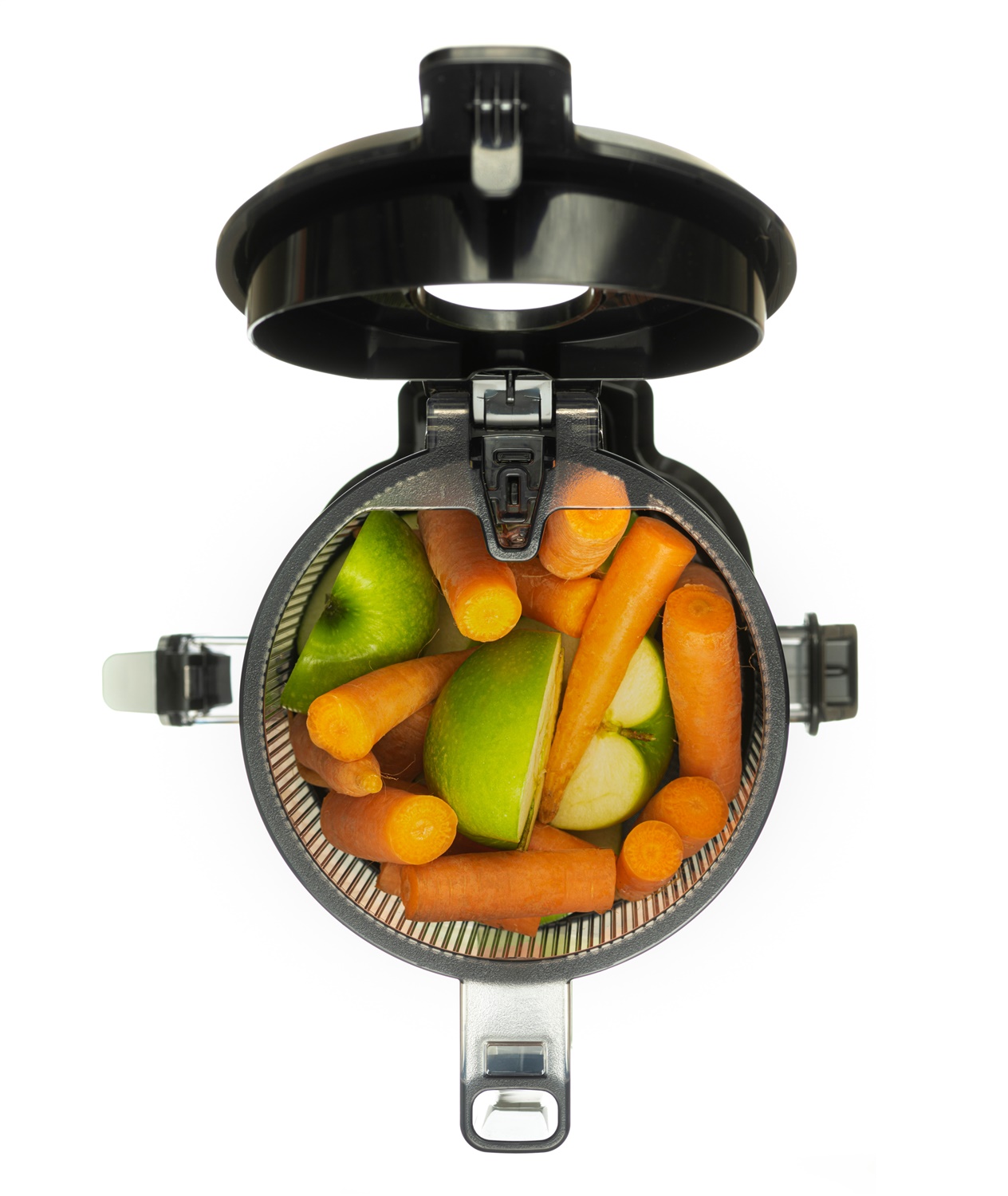
The Nama J2, hailed as the poster child for hands-free juicing, has taken the juicing world by storm with its cutting-edge innovation of ‘load it and leave it’ juicing. This juicer’s launch single handedly marked a turning point in the world of home juicing, as it offered an entirely new way to enjoy fresh juices with minimal effort. The Nama j2 has quickly ascended to the top of the popularity charts in vertical slow juicer design, outstripping all its competitors, and rightly so.
How It’s Going:
The evolution in juicer designs that we’ve witnessed since we started has been a journey of continuous innovation and improvement, with Kuvings/NUC and Hurom playing pivotal roles in shaping the industry, alongside the innovative brands that they work with. From the shift towards vertical slow juicers to the development of batch juicing, our brands have continually raised the bar for juicing technology.
In a landscape where the demand for healthy and convenient juicing options steadily expands, the prospect of forthcoming innovations in the market is, for us at least, an exciting prospect. Hopefully, juicer enthusiasts can eagerly anticipate the arrival of more efficient, user-friendly, and nutritionally potent juicing solutions in the years ahead.
Our aspiration is to remain at the forefront of this exhilarating journey, steadfastly committed to upholding the distinguished standard of exceptional customer service for which we are renowned. Here’s to the road ahead, and hopefully we’ll make it through the next 21 years!
 Register / Login
Register / Login 





